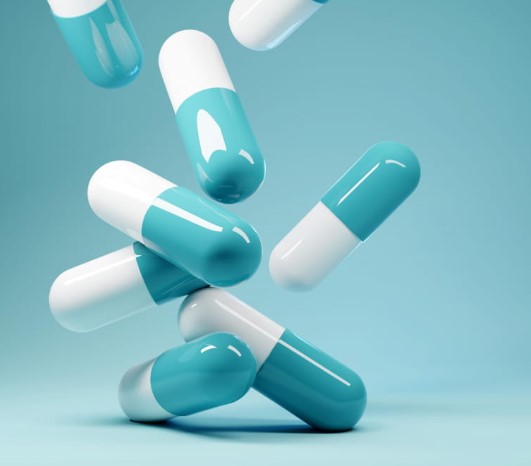Antibiotics in strawberries

Photo is illustrative in nature. From open sources.
Strawberries are one of the most beloved berries, which are often used in cooking and pharmacology. Like any other plant, strawberries can be attacked by pests and diseases. In such cases, farmers usually turn to chemicals, including antibiotics, to protect the crops.
However, the use of antibiotics in strawberries is a concern. As with raspberries and bees, the use of antibiotics can lead to the development of resistance in bacteria and harm the ecosystem.
Fortunately, in most cases, antibiotics are not required to grow strawberries. There are safer and more effective methods of pest and disease control that do not have negative consequences for the environment and human health.
One such method is the use of biological plant protection products, such as bacteria, fungi and parasitic insects, which can destroy strawberry pests without the use of chemicals. You can also use physical methods, such as feeding plants with organic fertilizers or creating conditions for natural plant protection.
However, if chemicals are required, then safer alternatives to antibiotics, such as fungicides and insecticides based on natural ingredients, should be chosen.
It is important to remember that caring for the health of plants and the ecosystem is not only the responsibility of farmers, but also our shared responsibility. Consumers can choose products grown without the use of antibiotics and other chemicals, and thus contribute to the development of organic agriculture.
In conclusion, the use of antibiotics in strawberries is optional and can harm the ecosystem. There are safer and more effective plant protection methods that will help keep strawberries and the environment healthy.
Read together with it:
- Antibiotics in milk: the problem and ways to solve itMilk is a staple food that is widely used by people around the world. However, despite its benefits and popularity, there are concerns about the presence of antibiotics in milk. This is because some farmers may useantibiotics for the treatment of animals or the prevention of diseases, which may resu...
- Antibiotic tests pioneerTests forAntibiotics are an important tool in medicine for determining the sensitivity of bacteria to various antibiotics. A Pioneer in this field is a technique developed in the 1950s that can quickly and efficiently determine the effectiveness of antibiotics against specific microorganisms. In thi...
- My husband's attitude made me depressedI have been depressed for the last 2 years. I am 36 years old,married for 11 years, two children - 8 years and 4 years old. I haven’t worked for 8 years, I stay at home with the children.When the eldestI sent my daughter to kindergarten, she began to constantly get sick, after 7 months she was still...
- Green snot... When should you take antibiotics?Green snot is one of the symptoms that can accompany a cold or flu. Often people turn to antibiotics to get rid of green snot, but this may not be the right approach to treatment. Antibiotics are not a universal cure for all types of infections. They are only effective against bacterial infections, ...
- Antibiotics in buckwheat: myth or reality?Buckwheat is one of the most popular grain crops in Russia and other countries. Its high nutritional value and availability make it a favorite for many people. But is there a connection between buckwheat and antibiotics? There are many myths about what buckwheat containsantibiotics . However, scient...
- Antibiotics in fish: myth or reality?Fish is one of the most popular food all over the world. It is rich in proteins, vitamins and minerals, and also contains essential fatty acids, which are essential for human health. However, there is an opinion thatfish may containantibiotics , which are used in industrial fisheries to treat fish d...
- Antibiotics in flounder, myth or reality?The flounder isfish , which is very popular in many countries of the world. However, the use of flounder can lead to dangerous consequences, since this fish may containantibiotics . In this article, we will talk about 10 reasons why you should give up flounder. 1. Flounder may contain antibiotics. T...
- CefacetrilCefacetril is an antibiotic that belongs to the class of third-generation cephalosporins. It is used to treat various infections caused by bacteria, including pneumonia, sepsis, urinary tract infections, and skin infections. The action of cefacetril is based on its ability to destroy the cell walls ...
- CeftiofurCeftiofur is an antibiotic that belongs to the fourth generation cephalosporin class. It is widely used to treat infections caused by bacteria that are sensitive to this drug. Ceftiofur is highly active against gram-negative bacteria such as E. coli, Klebsiella, Proteus and Pseudomonas. It is also e...
- Can antibiotics be added to milk?Adding antibiotics tomilk is a topic that causes a lot of controversy and discussion. Some people believe that this is necessary to prevent diseases in animals and protect human health, while others believe that this can lead to serious problems. First, it is worth noting that adding antibiotics to ...

